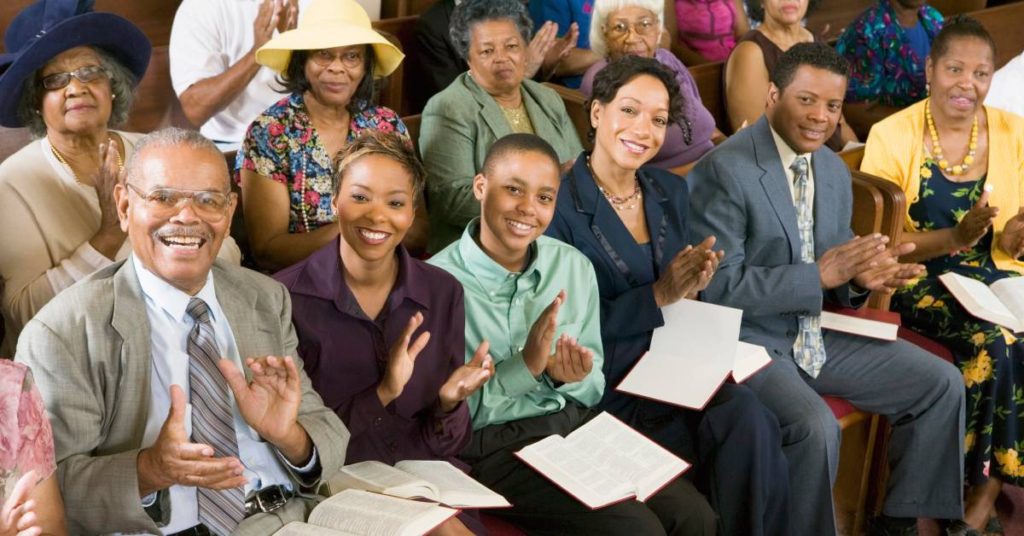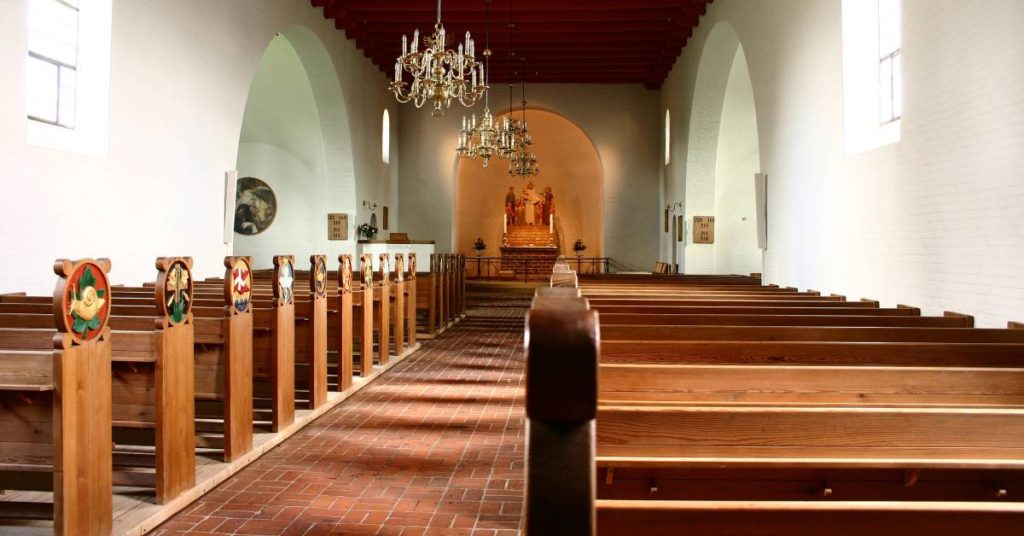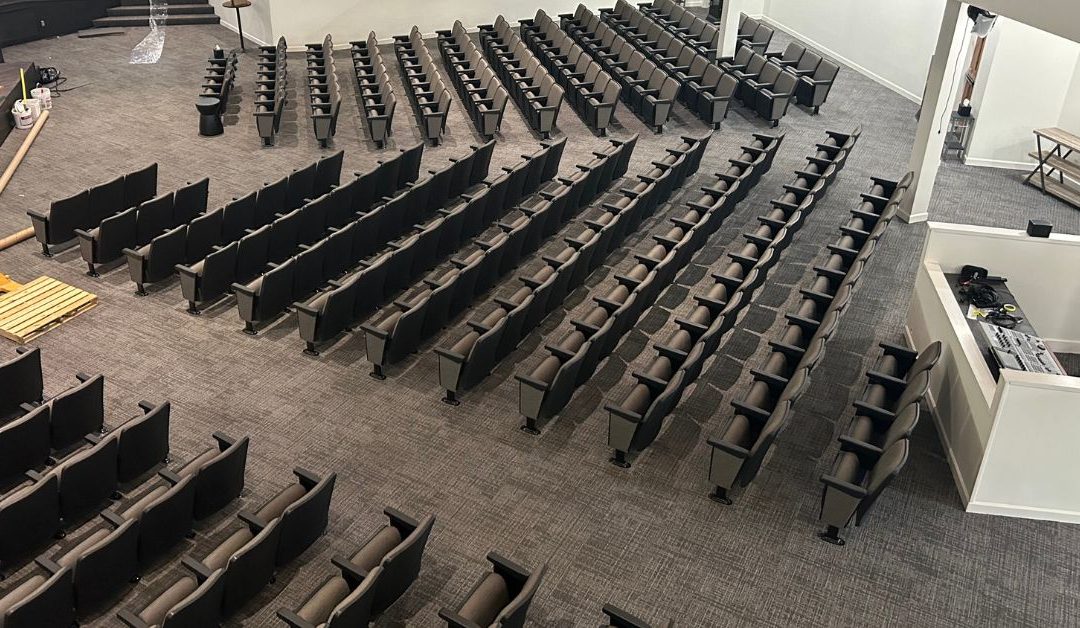A church’s seating should instantly make you feel at home. The ambiance, comfort, and layout of the seats are crucial in creating a welcoming and comfortable environment for worship. However, if your options are church pews or chairs, how do you know whether you’re choosing the right one? Read on for our best tips!
The Importance of Seating in Churches
Church seating embodies the values of inclusivity, community, and reverence for many congregations. The choice between pews and chairs deserves thoughtful consideration, whether you attend a newly established church or yours has been standing for centuries. With this in mind, understanding the basics of church seating, its history, and its impact on worship will help you make the right choice for your congregation.

The Evolution of Church Seating From Pews to Chairs
Church seating has undergone a fascinating transformation over the years. Historically, congregations predominantly used pews for church. These long, bench-style seats became synonymous with traditional worship settings. Pews originated in the early Christian churches and were designed to accommodate large congregations and reflect a sense of communal worship.
However, as church architecture evolved and congregational needs changed, so did the approach to seating. The introduction of individual chairs marked a significant shift in church interiors. The need for flexibility, comfort, and adaptability drove this change. Chairs allowed for various seating arrangements, catering to different events and gatherings beyond regular services.
Today, many churches find themselves at a crossroads, weighing the charm of traditional pews against the modern advantages of chairs. Understanding this evolution helps us appreciate the diverse options available and the reasons behind them.
Comparative Analysis of Pews and Chairs
Flexibility
One of the primary advantages of chairs over pews is their flexibility. You can easily rearrange chairs to accommodate different events, whether it’s a wedding, a conference, or a community meeting. This adaptability allows churches to maximize their space and cater to various activities without restricting themselves to fixed seating.
In contrast, pews are typically stationary, limiting the ability to modify the seating layout. While this may suit traditional worship services, it can pose challenges for churches that host a range of events requiring different seating configurations.
Comfort
Comfort is a critical factor in ensuring that congregants can fully engage in worship without distractions. Modern chairs often come with ergonomic designs, padded seats, and backrests, providing enhanced comfort during long services. This comfort can significantly impact the overall worship experience, encouraging more active participation and reducing discomfort-related distractions.
While some pews have been updated with cushions or padding, they generally lack the ergonomic support that chairs offer. Therefore, chairs may be a more suitable option for congregations with elderly members or those prone to back issues.
Space Utilization
Chairs also offer a distinct advantage when it comes to space utilization. You can stack or fold them when not in use, freeing up valuable floor space for other activities. This versatility is particularly beneficial for churches with limited space or multi-purpose areas.
Pews, however, are stationary and occupy a significant amount of floor space. While they can create a sense of uniformity and order, they may limit the available space for other activities and functions.
Cost
Cost is a crucial consideration for any church, regardless of its size or budget. Chairs generally come at a lower upfront cost compared to pews. Additionally, the ability to purchase chairs in smaller quantities allows for phased investments, making it easier for churches to manage their budget.
Pews are often custom-made and crafted from high-quality wood, which can be a significant financial investment. However, they are durable and can last for decades with proper care, potentially offering long-term value.

Chairs and the Impact on Congregation
The choice of seating can have a profound impact on the congregation’s dynamics and engagement. Chairs offer the flexibility to create intimate seating arrangements, fostering a sense of closeness and community among worshippers. They also allow for better accessibility, making it easier for individuals with mobility challenges to find a comfortable seat.
Conversely, pews convey a sense of tradition and reverence, creating an atmosphere of solemnity and continuity. This traditional setting enhances the worship experience and reinforces a sense of shared history and values for some congregates.
Ultimately, the choice between pews and chairs should align with the congregation’s preferences and the desired atmosphere of the worship space.
Practical Considerations for Choosing Between Pews and Chairs
Congregation Size
The size of the congregation is a critical factor in determining the most suitable seating option. Larger congregations may benefit from the uniformity and capacity of pews, while smaller or growing congregations might prefer the flexibility of chairs to accommodate fluctuating attendance.
Building Layout
The church’s layout and architecture are significant in the seating decision. Churches with expansive, open spaces may find pews to be more visually cohesive, while those with multi-purpose rooms or irregular layouts may benefit from the adaptability of chairs.
Budget
Financial considerations are always paramount. Churches must evaluate their budget constraints and prioritize their spending. Chairs offer a cost-effective solution that you can scale over time, while pews represent a long-term investment in quality and tradition.
Additional Considerations
Trends in Church Seating
Modern church interiors are increasingly favoring chairs for their versatility and contemporary appeal. This decision also reflects the growing popularity of mixed seating arrangements, combining pews and chairs to create dynamic and flexible worship spaces.
Design Aesthetics
Maintaining a cohesive design aesthetic is essential for creating a harmonious worship space. Designers suggest choosing seating that complements the church’s architectural style and interior decor. The choice should enhance the overall ambiance and reflect the church’s identity, whether opting for traditional wooden pews or modern upholstered chairs.
Accessibility
Accessibility is a fundamental consideration when choosing church seating, ensuring that all congregates can fully participate in worship services. By prioritizing accessibility in seat selection, churches enhance the worship experience and demonstrate their commitment to fostering an inclusive environment where everyone feels welcomed and valued.
Make Your Congregants Feel Inspired and Connected
So, church pews versus chairs, how do you know whether you’re choosing the right one? After all, this decision impacts the worship experience, community engagement, and overall functionality of the worship space. Both options offer unique benefits; however, the final choice should align with the congregation’s needs, the building’s layout, and the church’s budget.
The right seating can make all the difference in creating a space where congregants feel inspired and connected, whether you choose the timeless elegance of pews or the modern flexibility of chairs. Church leaders must carefully consider these factors to create a welcoming and comfortable environment that fosters a sense of community and enhances the worship experience for everyone.

